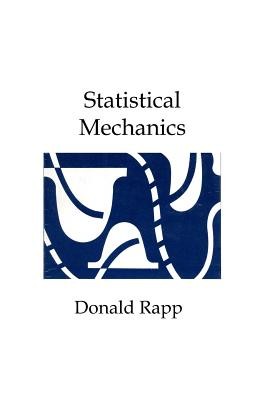
- We will send in 10–14 business days.
- Author: Donald Rapp
- Publisher: CreateSpace Independent Publishing Platform
- Year: 2012
- Pages: 318
- ISBN-10: 1475037864
- ISBN-13: 9781475037869
- Format: 17.8 x 25.4 x 1.7 cm, minkšti viršeliai
- Language: English
- SAVE -10% with code: EXTRA
Reviews
Description
. This text begins with a consideration of simple Boltzmann statistics, with particular application to the model of systems with two quantum states, and the Einstein and Debye treatments of the specific heats of a metal. After discussion of the Darwin-Fowler calculation of average distributions, the discussion moves on to the Bose-Einstein and Fermi-Dirac statistics of non-localized particles, and then to the classical limit approached by quantized systems in situations such as gas behavior and distributions of electric dipoles. This initial development occupies about the first third of the book. The text next takes up partition and thermodynamic functions of an ideal gas, with discussions of electronic, vibrational, and rotational (including internal rotation) contributions in atomic, diatomic, and polyatomic gases. A separate chapter is devoted to symmetry effects on wave functions and states, and the use of symmetry numbers in evaluating partition functions. This is a topic often glossed over, and frequently mystifying, to students. Chemical equilibrium is next considered, followed by chapters on the perfect quantum gas and imperfect gases where various intermolecular potentials are compared. The treatment of polyatomic molecules in terms of rigid rotations and small bond vibrations is developed, followed by a consideration of the transition state theory of chemical kinetics. The final chapter considers models of the liquid state and liquid-vapor equilibria. Despite its conciseness, this text covers a great deal of interesting ground.
EXTRA 10 % discount with code: EXTRA
The promotion ends in 22d.08:03:53
The discount code is valid when purchasing from 10 €. Discounts do not stack.
- Author: Donald Rapp
- Publisher: CreateSpace Independent Publishing Platform
- Year: 2012
- Pages: 318
- ISBN-10: 1475037864
- ISBN-13: 9781475037869
- Format: 17.8 x 25.4 x 1.7 cm, minkšti viršeliai
- Language: English English
. This text begins with a consideration of simple Boltzmann statistics, with particular application to the model of systems with two quantum states, and the Einstein and Debye treatments of the specific heats of a metal. After discussion of the Darwin-Fowler calculation of average distributions, the discussion moves on to the Bose-Einstein and Fermi-Dirac statistics of non-localized particles, and then to the classical limit approached by quantized systems in situations such as gas behavior and distributions of electric dipoles. This initial development occupies about the first third of the book. The text next takes up partition and thermodynamic functions of an ideal gas, with discussions of electronic, vibrational, and rotational (including internal rotation) contributions in atomic, diatomic, and polyatomic gases. A separate chapter is devoted to symmetry effects on wave functions and states, and the use of symmetry numbers in evaluating partition functions. This is a topic often glossed over, and frequently mystifying, to students. Chemical equilibrium is next considered, followed by chapters on the perfect quantum gas and imperfect gases where various intermolecular potentials are compared. The treatment of polyatomic molecules in terms of rigid rotations and small bond vibrations is developed, followed by a consideration of the transition state theory of chemical kinetics. The final chapter considers models of the liquid state and liquid-vapor equilibria. Despite its conciseness, this text covers a great deal of interesting ground.


Reviews